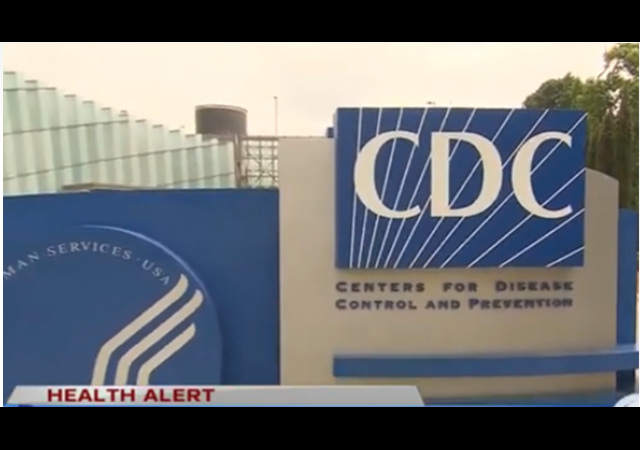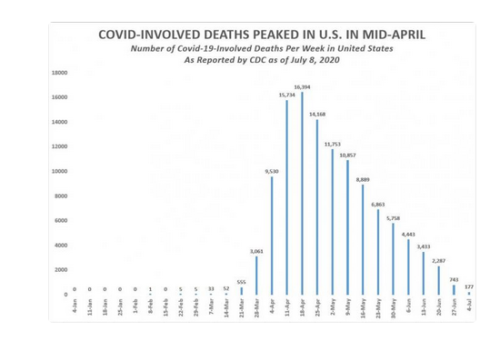CDC Not Amending Its Proposed School Reopening Guidelines, But Will Hand Out Additional Documents

100% of the participants I questioned today in my in-person poll agree with the following statement: I am so over COVID.
Clearly, Americans across the country are becoming more aware that the Wuhan coronavirus is substantially less lethal than initially feared. A recent study by researchers at Wake Forest found that between 12-14% of people tested in North Carolina have antibodies for the coronavirus, which indicates that they have been exposed to the virus and showed little or no symptoms.
The majority of the study participants are in the Triad area.The findings suggest that COVID-19 is less deadly than originally thought and that the death rate for the disease could be in the range of 0.1%.But the study also shows that there is significant community spread and that efforts so far to curtail COVID-19 are faltering.“It’s a double-edged sword,” said John Sanders, the chief of infectious diseases at Wake Forest Baptist. “We are clearly seeing a rapid increase in the number of people that we have antibody evidence who have been infected.”But he said “the vast majority of these people have very few or no symptoms.”“We can look at it and say the death rate is lower than we have estimated,” Sanders said. “The severity of symptoms is lower than we estimated and the vast majority of people who were infected are going to do fine.”

Furthermore, the death rate has declined by 86% from its peak in April and is clearly on the decline. In fact, the drop is so steep that the Centers for Disease Control (CDC) indicate that COVID-19 will cease to qualify as an epidemic under agency definitions rules.

Based on the new findings, and it is clear the country has “flattened the curve,” the Trump administration is having the CDC tweak school reopen rules to remove impractical and needless requirements.
The Centers for Disease Control and Prevention is revising its guidance on reopening schools after President Donald Trump tweeted his disagreement with them, Vice President Mike Pence said Wednesday.”The president said today we just don’t want the guidance to be too tough,” Pence said at a news conference at the U.S. Department of Education. “That’s the reason why, next week, CDC is going to be issuing a new set of tools, five different documents that will be giving even more clarity on the guidance going forward.”
CDC Director Dr. Robert Redfield said the agency will not amend its guidelines but will provide additional documents to help the communities:
“Our guidelines are our guidelines, but we are going to provide additional reference documents to aid basically communities in trying to open K-through-12s,” Redfield said. “It’s not a revision of the guidelines; it’s just to provide additional information to help schools be able to use the guidance we put forward.”–“Right now, we’re continuing to work with the local jurisdictions to how they want to take the portfolio of guidance that we’ve given to make them practical for their schools to reopen,” he said.
In fact, a look at the European models of school reopening indicates that cases of coronavirus continued to decline after schools resume classes.
Early data from European countries suggest the risk to the wider community is small. At least when local infection rates are low, opening schools with some precautions does not seem to cause a significant jump in infections elsewhere.It’s hard to be sure, because in most places, schools reopened in concert with other aspects of public life. But in Denmark, nationwide case numbers continued to decline after day care centers and elementary schools opened on 15 April, and middle and high schools followed in May. In the Netherlands, new cases stayed flat and then dropped after elementary schools opened part-time on 11 May and high schools opened on 2 June. In Finland, Belgium, and Austria, too, officials say they found no evidence of increased spread of the novel coronavirus after schools reopened.
However, the American press still wants to gin-up pandemic panic. For example, The New York Times smeared the nation of Sweden, which kept is economy mostly open and relied on personal responsibility for mitigation.
More than three months later, the coronavirus is blamed for 5,420 deaths in Sweden, according to the World Health Organization. That might not sound especially horrendous compared with the more than 129,000 Americans who have died. But Sweden is a country of only 10 million people. Per million people, Sweden has suffered 40 percent more deaths than the United States, 12 times more than Norway, seven times more than Finland and six times more than Denmark.
Here are the global death rates for based on all KNOWN cases within each country as of July 1, 2020, (remember the Wake Forest study indicating many people defeat the virus successfully without ever feeling ill):
Between the actual science and my poll, the data is in: The “consensus science” is settled, and the press needs to stop pushing pandemic porn.
CLICK HERE FOR FULL VERSION OF THIS STORY